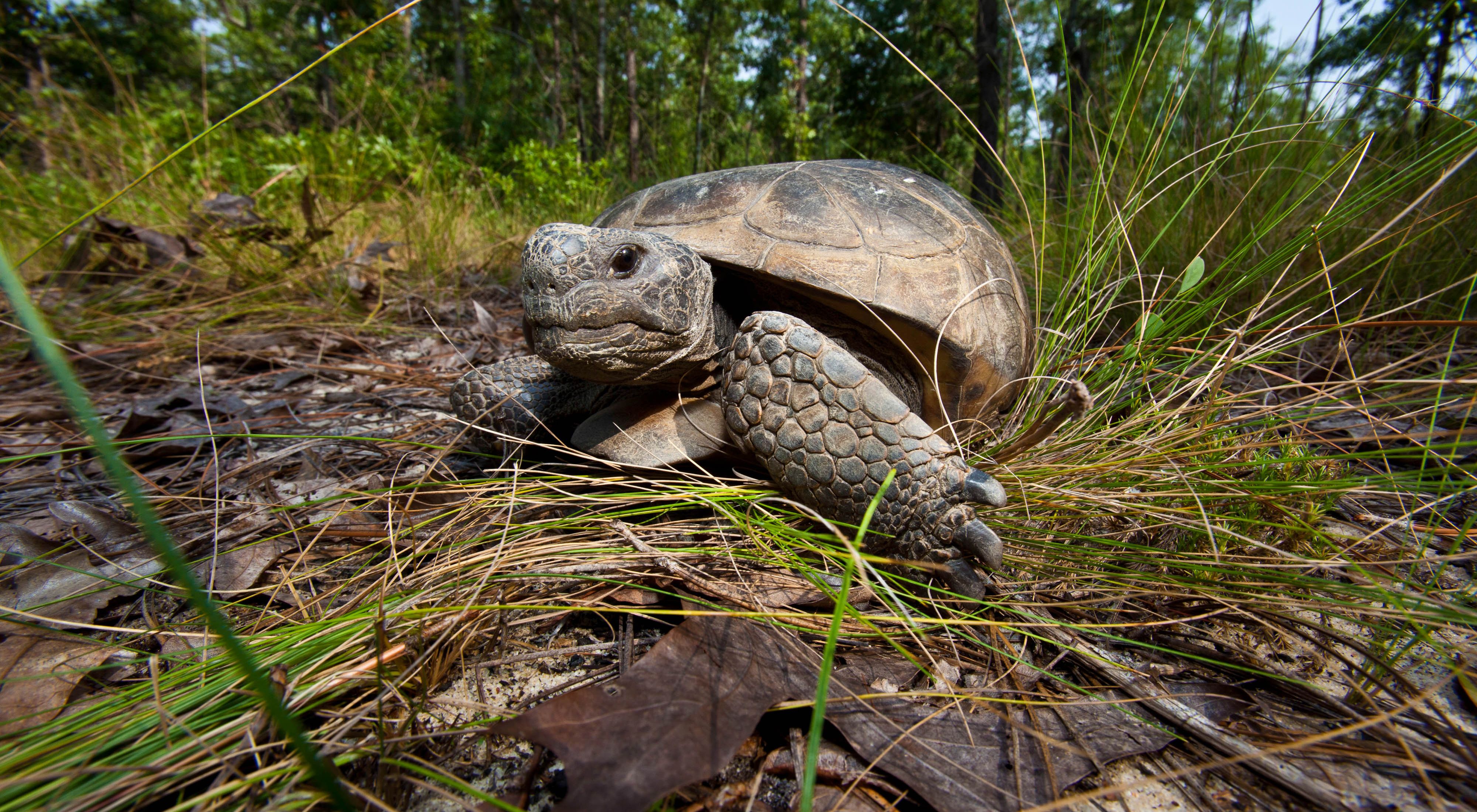Description
What makes this preserve unique?
Talisheek Pine Wetlands Preserve supports one of the largest tracts of intact pine flatwood wetlands in southeast Louisiana. It supports high quality examples of longleaf pine flatwood savanna, slash pine—pond cypress woodlands and bayhead swamps. Numerous rare plant and animal species have been detected thus far. Over 20 rare plants have been identified on the area, including one species, pink bog-buttons (Sclerolepis uniflora), that is known in Louisiana only from this area. Rare animals known to be present include the federally threatened gopher tortoise (Gopherus polyphemus), state-rare mud salamander (Pseudotriton montanus), and the rare grassland birds Bachman’s sparrow (Aimophila aestivalis) and Henslow’s sparrow (Ammodramus henslowii). Additional inventories will undoubtedly uncover more surprises at this exceptional site.
Because there is no public access to the preserve and no maintained trails, the preserve is not open for public visitation.
Why TNC Selected this Site
TNC selected this site for its location within the flatwoods region of the East Gulf Coastal Plain, the presence of important and unique native communities and rare native species, and its potential for longleaf savanna restoration. It was also selected for its potential to serve as a platform to demonstrate restoration and management of longleaf pine flatwood savanna. This area is one of the units of TNC’s Southeast Louisiana Pine Wetland Mitigation Bank. It is also part of a larger priority conservation project area for TNC that encompasses over 10,000 acres of private land in the surrounding area.
The longleaf pine flatwoods region of the East Gulf Coastal Plain is an extensive relatively flat area of the outer coastal plain, extending from southeast Louisiana eastward to the Florida panhandle. The historically dominant habitat was a longleaf pine flatwood/savanna complex, in which longleaf pine flatwood forests on low ridges and rises mixed with wet longleaf pine savannas in broad flats and swales, forming a complex mosaic. Only relatively small, highly fragmented examples of this ecosystem remain in the region. Longleaf pine savannas are essentially wet grassland communities with scattered trees and shrubs, maintained by frequent fire. The typically dense, herbaceous groundcover is dominated by grasses, sedges, and a wide variety of forbs (“wildflowers”), varying in composition from place to place, primarily as a result of differences in soils, hydrologic factors, fire and other land management history.
Longleaf pine savannas are among the most diverse and most threatened habitats in North America, with only 1 to 5% of the original acreage estimated to remain. Although relatively large areas of West Gulf Coastal Plain upland longleaf pine forests have been protected mainly on federal lands, there are virtually no flatwood sites in public ownership or under conservation management, other than those currently in wetland mitigation banks. Because continued loss of longleaf pine habitat is greatest in the flatwoods region, conservation efforts are most needed in that area.
Longleaf pine flatwood savannas continue to decline at an alarming rate and are highly vulnerable if current trends continue. Threats include conversion to pastures and other agricultural endeavors, conversion to off-site loblolly or slash pine plantations, clearing for commercial and residential development, alteration of the natural fire regime, and drainage, among others. Longleaf pine savannas and other associated wetland communities are considered important for floodwater retention, groundwater recharge, maintenance of water quality, habitat for a myriad of wildlife species and several rare plant and animal species, and other ecological and human benefits.
What TNC Has Done/Is Doing
The conservation vision for this property is to restore the historic structure, composition, functional processes, and geographic extent of all associated natural communities, with an emphasis on longleaf pine flatwood savanna. We are accomplishing this restoration through application of aggressive restoration practices, including restoration timbering and herbicide treatments to remove off-site trees and brush, use of frequent prescribed fire, plantings of longleaf pine where needed, and control of non-native invasive species. We have also undertaken an ambitious project (the “McCulla Field” project) to restore a former agricultural field back to longleaf pine savanna through a step-wise process of controlling undesirable field weeds, reintroduction of native savanna herbaceous species over time, planting of longleaf pine, application of frequent prescribed fire, and remediation of altered site hydrology to restore wetland characteristics.
On a broader scale, TNC has been partnering with conservation-minded landowners in the near vicinity, who collectively own several thousand acres being restored to native habitats. Our key conservation strategy calls for protection of at least 10,000 acres in this landscape to ensure long-term viability of the savanna habitat and the many associated species it supports.
TNC’s St. Tammany preserves have greatly benefited from volunteers helping with a variety of projects, such as boardwalk construction and longleaf planting.
Talisheek Pine Wetlands Preserve is one of three units in TNC’s Southeast Louisiana Pine Wetland Mitigation Bank, which also includes Lake Ramsay and Abita Creek preserves. Wetland mitigation has been a valuable tool to enable TNC to acquire, restore and manage significant natural areas in St. Tammany Parish.
